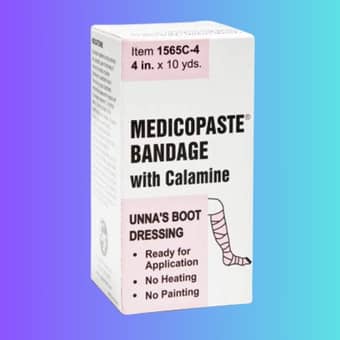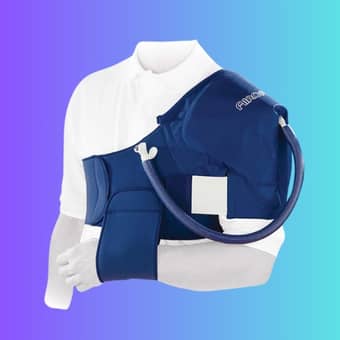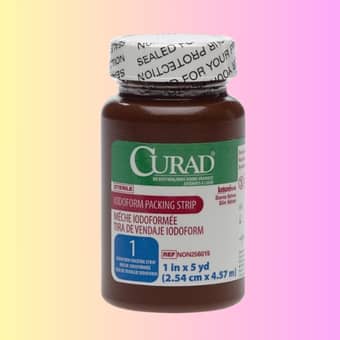Knees can wear down over time, like any other body part. This can happen due to aging, injuries, or medical conditions. Spotting the signs that show you need knee restoration can prevent more damage. It can also improve your quality of life. In this guide, we’ll explore common signs. They suggest it’s time to restore your knee joints. We’ll also cover the treatments to help you regain mobility and reduce pain.

Table of Contents
- I. Pain and swelling.
- II. Movement Limitation
- III. Reduced Functionality
- IV. Noise and unusual sensations.
- V. Bone and Joint Degeneration
- VI. Types of Knee Joint Damage
- VII. Factors contributing to knee joint damage.
- VIII. Tips for Identifying Knee Joint Problems
- IX. Step-by-Step Guide to Diagnosing Knee Joint Issues
- X. Pros and Cons of Knee Joint Restoration
- XI. Understanding Knee Joint Restoration Procedures
- XII. Lifestyle Changes to Support Knee Joint Health
- XIII. Managing Expectations and Recovery
- Improved quality of life with early knee joint restoration.
- FAQ
Key Takeaways:
-
Persistent Pain: You’ve had persistent pain in your knee. It may be a sign that you need knee restoration.
-
Your knee has trouble bending or straightening. This decreased range of motion could mean that you need knee joint restoration.
-
Your knee may have swelling, stiffness, or instability. These can also be signs. They mean you might need knee restoration to fix hidden issues.
I. Pain and swelling.
1.1. Constant pain in the knee joint.
Occasional knee pain is common. Yet, ongoing pain can signal a more serious issue. It may need knee joint restoration. If you have constant knee pain, this is especially true at rest or during movement. You must see a healthcare provider. They will give you a proper diagnosis.
1.2. Swelling and Enlargement Around the Knee Joint Area
Swelling and enlargement around the knee joint show the need for knee restoration. Various issues, such as inflammation, injury, or arthritis, can cause this. If you notice swelling that won’t improve with rest or elevation, seek medical advice.

II. Movement Limitation
2.1. Difficulty moving the knee joint.
One sign you need knee joint restoration is having little knee space. This can manifest as stiffness, pain, or a limited range of motion in the knee.
2.2. Impact on daily activities such as walking or climbing stairs.
You may notice that your knee issues are starting to impact your daily activities. This includes walking and climbing stairs. Simple tasks that once were easy may now be challenging due to pain or instability in the knee joint.
You might find yourself avoiding certain activities. Or, you might change your movements to ease the discomfort in your knee.
III. Reduced Functionality
3.1. Decline in knee joint functionality.
Many people may notice a decline in their knee joint functionality over time. This can cause stiffness. It can also make bending the knee hard and reduce the range of motion. Simple tasks, like climbing stairs or getting up from a chair, may become hard. This is due to the loss of knee joint function.
3.2. Inability to maintain normal movement.
You can’t do normal knee movements. This may mean you need knee joint repair. This could include activities like squatting, kneeling, or even walking. They must be painless and stable. It isn’t being able to move your knees as you used to that can impact your life. It can also show the need for help.
Be aware of any limits in your knee movements. Seek medical advice if you’ve got persistent issues. You should address knee joint problems early. This will stop more damage and boost your function.

IV. Noise and unusual sensations.
4.1. Unusual sounds, such as clicking or popping.
After an injury or over time, you may notice strange sounds. They might be clicking or popping from your knee joint. This could mean issues with the cartilage or meniscus within the knee.
4.2. Sensation of bone spurs or stiffness in the knee joint.
The knee joint may have clicking sensations or bone spurs. It may also feel stiff. These can all be signs that the joint isn’t moving. This can be a result of wear and tear on the joint surfaces, leading to discomfort and decreased mobility.
Spurs are small, bony projections that can develop along the edges of the bones in a joint. These spurs can cause a sensation of stiffness and limit the range of motion in the knee. If you have these symptoms, it’s best to see a healthcare professional. They can give you an accurate diagnosis and suggest proper treatments.

V. Bone and Joint Degeneration
5.1. Symptoms of Knee Joint Degeneration
If you start feeling pain, stiffness, or less flexibility in your knee, it could be a sign of degeneration. It may also mean that the knee joint is degenerating. This can make bending the knee, like when climbing stairs or standing up, hard.
5.2. Swelling, inflammation, and decreased functionality.
The knee joint can degenerate. This can cause symptoms like swelling, inflammation, and a noticeable loss of function. You may have swelling around the knee. It’s often warm to the touch and can make it hard to bear weight. Inflammation may cause redness and tenderness in the joint as well.
5.3. Functionality
As knee joint degeneration progresses, you may notice a significant decrease in functionality. This could be an inability to straighten or bend the knee. It could also cause instability while walking or standing. And there’s a feeling of weakness in the joint. Maintaining an active lifestyle might become hard. This is due to the decreased function of the knee joint.

VI. Types of Knee Joint Damage
Not all knee joint damage is the same. Knowing your specific damage type is crucial. It helps us find the best treatment plan. Several types of knee joint damage are common. Each type has clear symptoms and causes. Knowing the differences between them can help you and your provider. You can use this to decide on the best course of action.
| Osteoarthritis and Cartilage Wear | Meniscal Tears and Ligament Sprains |
| Tendinitis and Bursitis | Patellar Fractures and Dislocations |
| Rheumatoid Arthritis | Posterior Cruciate Ligament (PCL) Injuries |
| IT Band Syndrome | Anterior Cruciate Ligament (ACL) Tears |
| Patellar tendonitis | Septic Arthritis |
6.1. Osteoarthritis and Cartilage Wear
There’s no cure for osteoarthritis. It results from the breakdown of joint cartilage. This can cause pain, swelling, and stiffness in the knee. Treatment options focus on managing symptoms. They also aim to slow the disease with drugs and therapy. In severe cases, they repair the knee joint.
6.2. Meniscal tears and ligament sprains.
Osteoarthritis often causes meniscal tears and ligament sprains. This is due to gradual wear on the knee joint. These injuries can cause pain, swelling, and instability in the knee. A healthcare provider must do a thorough evaluation. We’ve needed this to determine the extent of the damage and the best treatment. Treatment may include rest, physical therapy, or surgery.
6.3. Tendinitis and Bursitis
People with tendinitis and bursitis get inflamed knee joints. This inflammation causes pain and limits mobility. Treatment involves RICE: rest, ice, compression, and elevation. It also includes anti-inflammatory drugs and physical therapy. In some cases, it’s necessary to use corticosteroid injections. They reduce inflammation and discomfort.

VII. Factors contributing to knee joint damage.
For people with knee damage, several factors may cause it. Identifying these factors can help understand the problem’s cause. It’s also helpful to explore solutions.
7.1. Age and wear and tear.
-
Age causes wear and tear on the knee joints. This wear and tear is a primary cause of joint damage. As we age, the cartilage in our joints may wear out. This can lead to pain, stiffness, and less mobility.
7.2. Obesity and excess weight.
-
Extra body weight can stress the knees. This stress speeds up wear and tear on the joint surfaces. This can result in increased pain and discomfort over time.
Excess weight causes wear and tear. It can make existing knee issues worse or cause new ones. Staying at a healthy weight can reduce the strain on the knees. It can improve joint health.

7.3. Previous injuries and traumas.
-
Past injuries or trauma to the knee can harm joint health for a long time. These injuries may weaken the knee’s structures. This makes the knee more likely to suffer future damage and degeneration.
Also, past injuries can lead to bad knee mechanics. Changing how we distribute weight increases the risk of causing more damage. It’s crucial to address any past injuries to prevent future complications.

VIII. Tips for Identifying Knee Joint Problems
-
Unlike other parts of the body, knee joint problems can manifest in various ways. Being aware of the signs can help with timely intervention and treatment.
-
Watching pain and swelling can show how your knee joints are doing.
-
Tracking changes in mobility and functionality can also identify underlying knee joint issues.
-
Noticing odd sounds and feelings during movement can be a sign. They can show that your knee joint health is getting worse.
8.1. Monitoring Pain and Swelling Patterns
Swelling in the knee joint can show inflammation or injury. This is especially true when it comes to pain. Watching pain and swelling patterns can help identify recurring issues. These may need medical attention.
8.2. Tracking Changes in Mobility and Functionality
Now, track how your mobility and functionality change over time. It could be a sign of knee joint problems. These problems make walking, climbing stairs, or bending the knees hard. It’s recommended to consult a healthcare professional for guidance.

8.3. Recognizing Unusual Sounds and Sensations
You might hear odd sounds, like clicking, popping, or grinding, in your knee. They could signal problems. Ignoring these signs may make the condition worse over time. So, it’s crucial to address them.
IX. Step-by-Step Guide to Diagnosing Knee Joint Issues
| Medical History and Physical Examination | Imaging Tests and Diagnostic Procedures |
9.1. Medical History and Physical Examination
Before any imaging tests, your provider will get your medical history. They will also do a physical exam. This evaluation helps us understand your symptoms. It identifies any past injuries and assesses the current state of your knee joint.
9.2. Imaging Tests and Diagnostic Procedures
Even with a thorough exam, you may need X-rays, MRI scans, or CT scans. They show the inside of your knee. These tests can give details about any bone, cartilage, ligament, or tendon problems. These problems may be causing your knee pain.
The exam and imaging will help your provider diagnose the issue with your knee. Based on these findings, we can make a plan to treat the cause of your knee pain. The plan will restore joint function.

9.3. Interpreting Test Results and Developing a Treatment Plan
To diagnose your knee issues, your provider will interpret your imaging test results. They will use them along with your medical history and physical exam findings. This approach is comprehensive. It allows for a precise diagnosis and an effective treatment plan. These will address your knee problems.
Finding the root cause of your knee issues is crucial. It determines the best treatment. This could be simple, like physical therapy and medication. Or it could be more advanced, like knee restoration procedures. Follow this step-by-step process. It will help you find and fix knee problems. Doing so will improve your health and life.
X. Pros and Cons of Knee Joint Restoration
| Pros | Cons |
| Improved mobility | Possible risk of infection |
| Reduced pain | Reactions to implants |
| Enhanced quality of life | Long recovery time |
| Increased joint function | Potential need for revision surgery |
10.1. Benefits of Restoration: Improved mobility and reduced pain.
It can offer big improvements. These are for people with limited mobility and chronic knee pain. By fixing the knee joint, patients can move better and have less pain. This leads to a better life.
10.2. Risks and Complications: Infection, Reaction to Implants
Joint restoration poses risks. Patients should be aware of infections and reactions to implants. You should discuss these risks with a doctor before having the procedure.
Technology and surgery have cut the risk of infection. They’ve also cut down on bad reactions to implants. Yet these risks still exist. Patients should follow post-operative care instructions to reduce these risks.
10.3. Weighing the Options: Restoration versus Alternative Treatments
To decide about knee joint treatment, patients should weigh the options. They should consider restoration and alternatives. Restoration offers better mobility and less pain. But, other treatments may have fewer risks.
Discuss the pros and cons with a healthcare provider. They’ll use them to find the best action based on your needs and health conditions.

XI. Understanding Knee Joint Restoration Procedures
11.1. Surgical Options: Arthroscopy, osteotomy, and replacements.
For those considering knee joint restoration, surgical options may include arthroscopy. They may also include osteotomies or knee replacements. Each procedure has its own benefits and considerations. These depend on the person’s condition and lifestyle.
11.2. Non-Surgical Options: Physical Therapy, Medication, and Lifestyle Changes
It’s crucial to understand non-surgical options. These include physical therapy, medication, and lifestyle changes. They’re crucial for managing knee joint issues. These simple methods can ease pain and boost movement. They might also delay the need for surgery.
For example, therapy can strengthen the muscles around the knee. This gives extra support and stability. Medications, like anti-inflammatories, can reduce pain and swelling. Lifestyle changes, like weight management, can lessen pressure on the knee joint.
11.3. Post-operative care and rehabilitation
Options for care and rehabilitation after surgery are important. They’re key to a successful knee restoration. Recovery includes physical therapy. It also includes managing pain. And it includes a slow return to activities.
Fixing the knee joint often uses many techniques. It combines surgery and other methods to get the best results and restore function. Talking to a healthcare professional can help. They can find the best action for each person’s needs.

XII. Lifestyle Changes to Support Knee Joint Health
12.1. Maintaining a healthy weight and diet.
Healthy weight management is vital for promoting knee joint health. Excess weight puts added stress on the knees, leading to pain and discomfort. A balanced diet has lots of fruits, vegetables, and whole grains. It also has lean proteins. It’s able to reduce inflammation and help joints work well.

12.2. Engaging in low-impact exercises and activities.
For those looking to support their knee joint health, low-impact exercises can help. These include swimming, biking, and yoga. These activities improve strength and flexibility. They do so without straining the knees.
Support your knee joint health. Do this by doing low-impact exercises. These exercises promote mobility and strength without making existing joint issues worse. Water aerobics, elliptical training, and tai chi are great options. They’ve reduced strain on the knees and given them a good workout.

12.3. Managing Stress and Avoiding High-Risk Activities
Doing stress-reducing activities helps. These include meditation, deep breathing, and gentle stretching. They can relieve tension. This tension may make knee pain worse. It’s also important to avoid high-risk activities. They put unnecessary strain on the knees. Examples include running on hard surfaces or playing contact sports.
Hiking and skiing are thrilling. Yet, they may increase the risk of knee injuries. It’s important to balance staying active with protecting your knees. Some activities could harm them. Always listen to your body. Choose activities that support your knee, not strain it.
XIII. Managing Expectations and Recovery
13.1. Setting Realistic Goals and Timelines
Setting small goals can help you stay motivated. You set them up little by little. This helps during your recovery. It’s important to be patient with yourself and understand that healing takes time. Celebrate each milestone you reach. They’re steps towards your larger goal of knee restoration.
13.2. Coping with Pain and Discomfort during Recovery
Pain management is crucial during the recovery phase. Your healthcare provider will give you guidance on medicine. They will also give tips to help reduce pain. Remember to tell your healthcare team about any pain levels. This will ensure that you get the right support and care.
13.3. Returning to normal activities and maintaining progress.
Returning to your normal activities after knee joint restoration is a gradual process. It’s important to listen to your body and not push yourself too hard or too soon. Your healthcare provider will give you guidelines. They will say when it is safe to resume specific activities. They’ll also tell you how to keep track of your progress.

Improved quality of life with early knee joint restoration.
Understanding the signs that show the need for knee joint restoration is crucial. It’s key to keeping the joints healthy. Persistent pain, swelling, and limited motion are common indicators. They show that treatment may be necessary. Seeking early help and consulting with a healthcare professional can prevent more damage. It can also improve the quality of life.
FAQ
Q: What are common signs that say you might need knee joint restoration?
Common signs show you might need knee joint restoration. They include: persistent knee pain, swelling, or knee stiffness. Knee motion also limits movement. The knee is unstable. It’s hard to do everyday activities due to knee pain.
Q: What causes the need for it’s knee joint restoration?
The need for knee joint restoration can have many causes. These include knee injuries like ligament tears or cartilage damage. Also, osteoarthritis, rheumatoid arthritis, overuse injuries, and aging-related knee joint wear and tear.
Q: How can knee joint restoration help improve its function?
Procedures can restore knee joints. They include arthroscopic surgery, partial or total knee replacement, and cartilage restoration. They reduce pain and increase knee motion. They also add stability to the knee. They let people return to their daily activities with less pain.
Last Updated on August 20, 2025 by Holistic Healths





